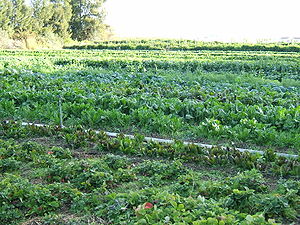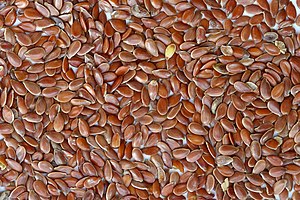We will explore this a bit today….
 Image via WikipediaMagnificent gardens don’t have to be pumped up by means of chemical fertilizers and pesticides to look great or give you great produce. Think about taking your garden to the next level – organic and sustainable. Organic gardening means growing vegetables and fruits through the use of things only found in nature.
Image via WikipediaMagnificent gardens don’t have to be pumped up by means of chemical fertilizers and pesticides to look great or give you great produce. Think about taking your garden to the next level – organic and sustainable. Organic gardening means growing vegetables and fruits through the use of things only found in nature.So why would one want to indulge in organic and natural gardening?
1. The first, and most important motivation to garden organically, is a health issue. Organically produced veggies aren’t passing along chemical residues that can build up within your body. We aren’t sure of the future effects of many chemicals, but why risk it when there’s an organic and natural alternative?
2. Organic vegetables grown in organic soil may have a larger percentage of vitamins and nutrients. Reports have shown that there is elevated vitamin C in leafy greens, potatoes, and oranges that are raised organically.
3. Gardening organically means you work with the entire cycle. You plant the seeds, harvest the vegetables or flowers, collect the seeds, compost the rest, and begin again. You are providing the soil with nutrients and feeding people, birds, and insects, which gives you a more intimate and fulfilling relationship with the environment around you, and humanity as a whole.
4. You can cultivate your produce to full ripeness for ample flavor. You can find dozens of seed catalogs with organic seeds that produce superb tasting produce. You don’t need a tomato grown to have a tough skin designed for transport across the country. You’re looking for a tomato that tastes good!
5. Gardening organically can entail a smaller amount of effort in the long run. If your soil is organic and healthy, it can produce strong plants which are more resistant to diseases and pests. Hardier plants will grow larger and cast shade over their roots which means not as much watering. Excellent soil will retain water better which also means less watering. More vigorous plants may even help to stifle out the weeds so you do not have to spend your valuable time weeding.
6. Organic and sustainable farming brings about less damage to the environment. Chemical fertilizers, insect killers, and weed killers can seep into our ground water supply or run off into our rivers and streams.
But we can recycle garbage through the utilization of our own compost from food and garden scraps and other wastes including straw and leaves.
Reusing these items keeps them from being burned or added to a landfill where they don’t have a possible opportunity to decay and add useful nutrients back into the soil. (See my previous post on composting for a lot more detail on this!)
 Image via WikipediaAdditionally, organic farming practices help stop the loss of topsoil due to erosion. The Soil Conservation Service states that an estimated 30 – 32 billion tons of soil erodes from United States farmlands each year.
Image via WikipediaAdditionally, organic farming practices help stop the loss of topsoil due to erosion. The Soil Conservation Service states that an estimated 30 – 32 billion tons of soil erodes from United States farmlands each year.7. Gardening organically can even save you money! One does not need to pay money for high priced chemical fertilizers and pesticides with organic gardening. A lot of natural recipes for the control of pests and disease come right from the kitchen cupboard. Also at times other beneficial plants can be grown as companions for the main crop. One example of this is the marigold, which helps to repel aphids from vegetables.
8. Your cooking undertakings can get extra innovative and fun! For example, some flowers are suitable for eating when you raise them organically. Add a unique touch to a salad presentation by adding nasturtiums or even brightly colored pansies. Your prepared dish will look like it came from a gourmet restaurant! (To find other cool cooking ideas, just check out the cooking page on our website at: http://www.newholisticliving.com/cookingfromscratch.html.)
In sum, gardening without the usage of chemicals can give you more vigorous crops and save you wasted time. More vigorous plants can mean tastier and healthier veggies that thrive with a smaller amount of water and also have fewer pest problems. So give organic and natural gardening a try for tastier vegetables and feel great about helping yourself as well as the world!
Questions? Comments? Feel free to post below!
Rose.
Related articles on Gardening Organically:
- What Is An Organic Garden? (hbb2obm.com)
- 5 Quick and Easy Organic Garden Tips for Beginner Gardeners (hbb2obm.com)













